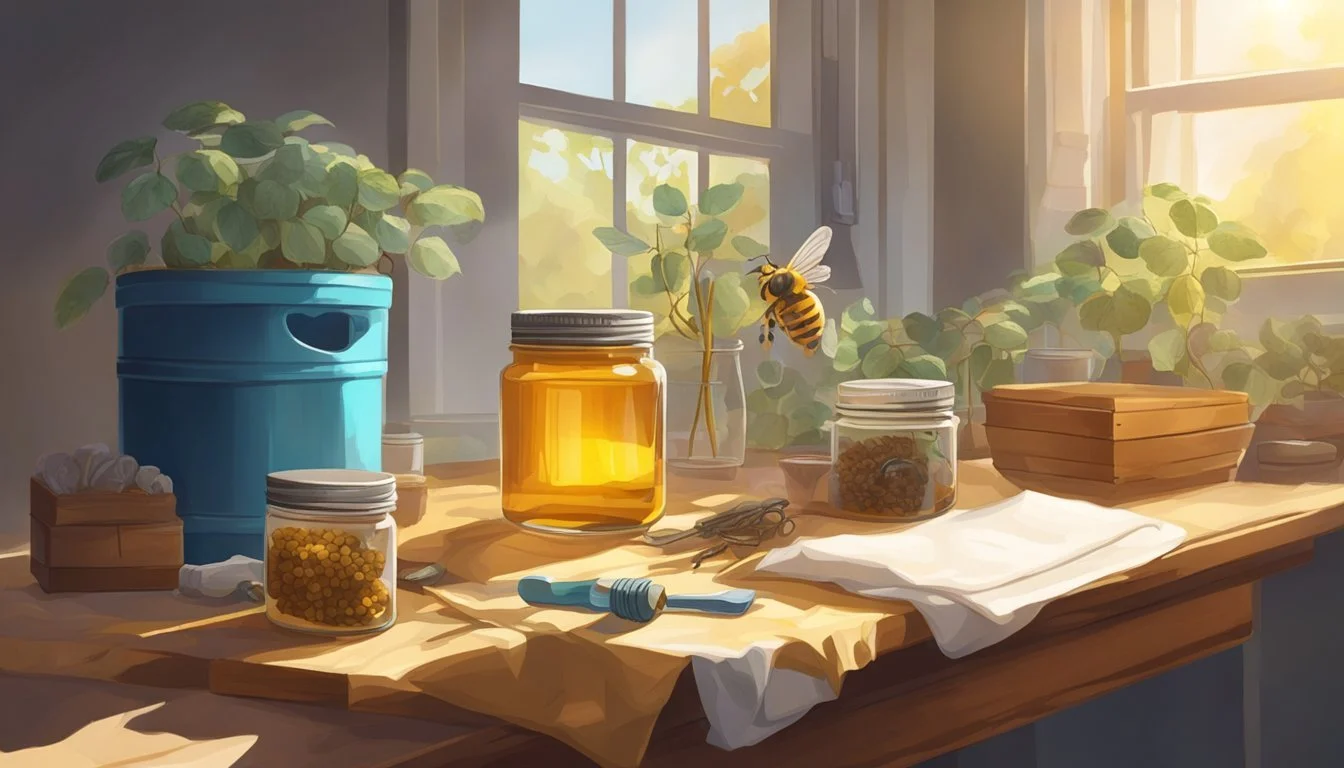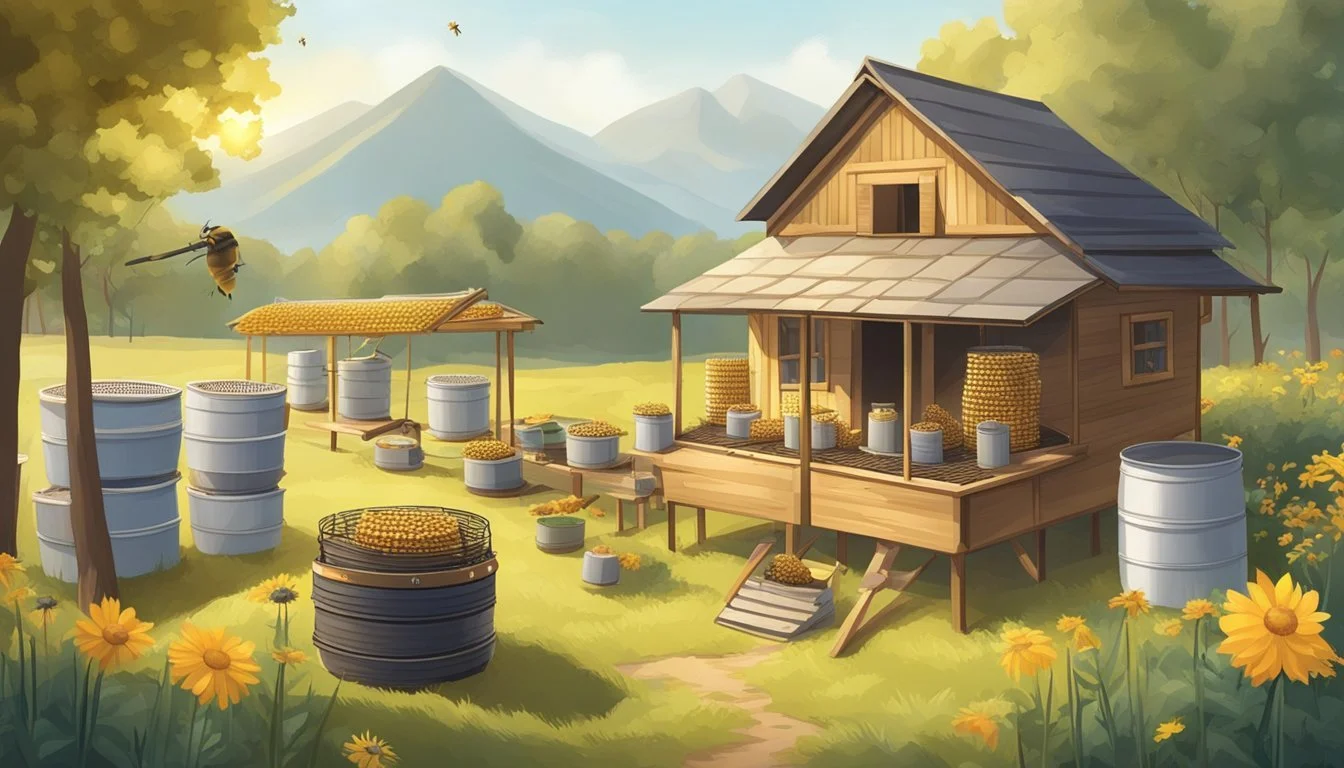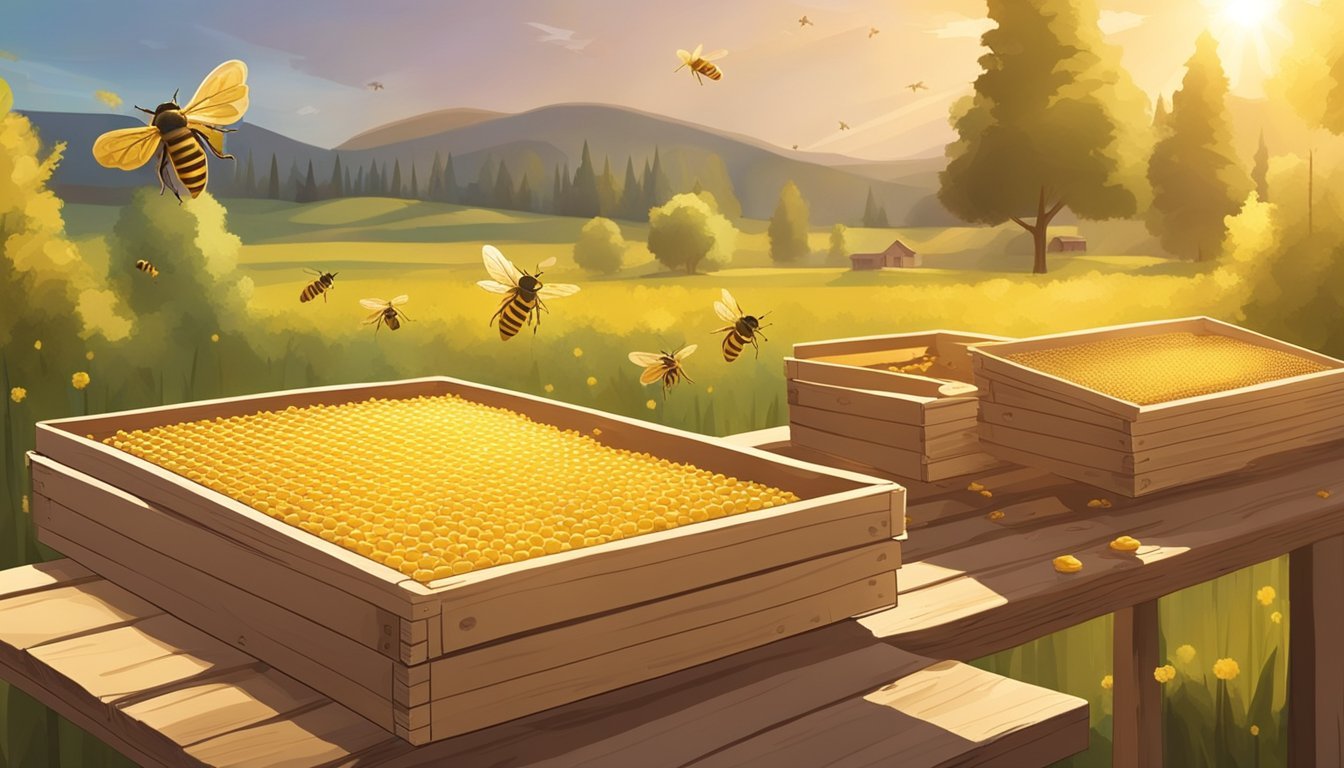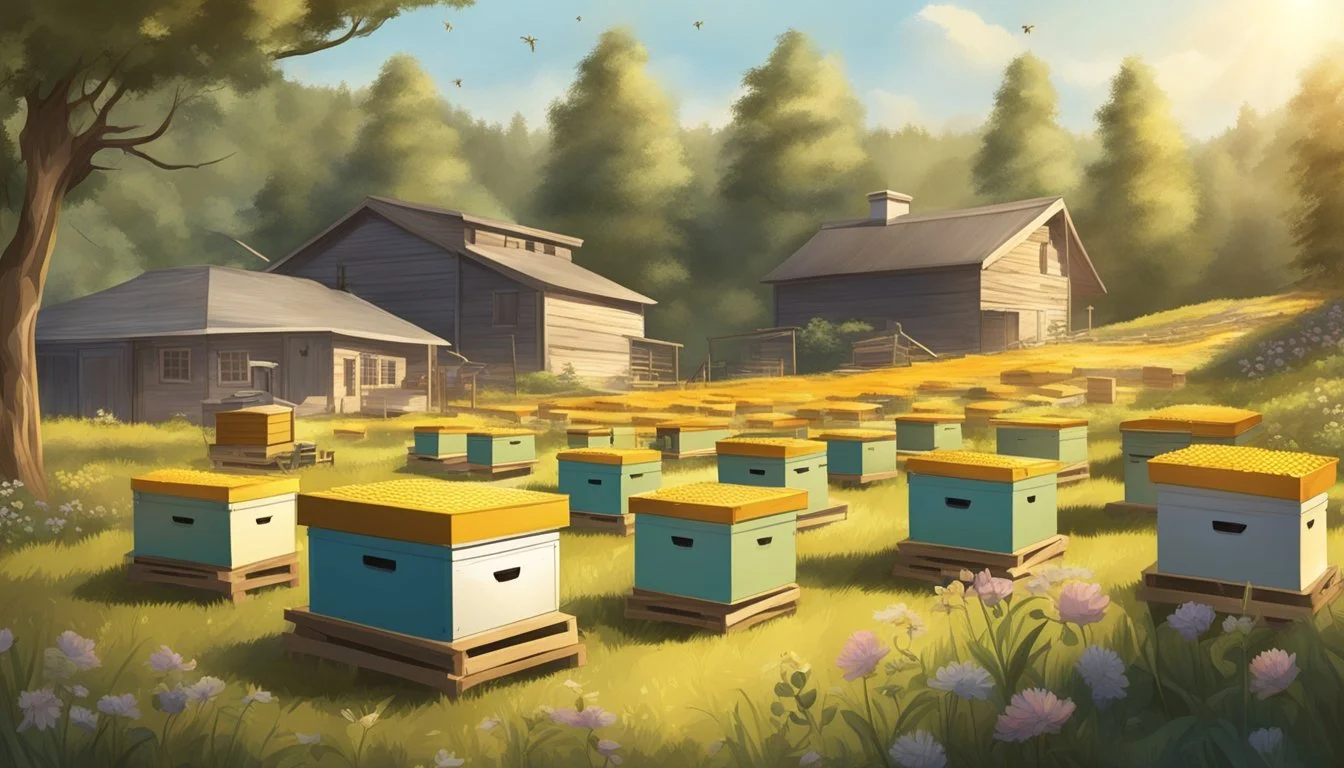Essential Queen Rearing Supplies for Successful Honeybee Breeding
A Homesteader's Guide
Queen rearing is a critical aspect of honeybee breeding, particularly for homesteaders looking to sustain and grow their apiaries. By raising their own queens, beekeepers can ensure the vitality and productivity of their colonies. It involves a meticulous process that allows beekeepers to select for desirable traits such as honey production, disease resistance, and temperament. Essential supplies, including queen rearing kits and specialized equipment, can aid in successfully breeding queens, providing the beekeeper with the tools to manage this delicate task.
Honeybee breeding on a homestead requires not only knowledge but also the right tools for queen rearing. A queen castle, for instance, provides a compartmentalized environment where multiple queens can be reared concurrently, echoing a bee colony's natural inclinations for expansion during spring. Quality comes with attention to detail; the timing of queen rearing coincides with the availability of drones for mating and sufficient worker bees to care for the developing queen cells. In this intricate dance of nature and nurture, a beekeeper's role is pivotal, making sure each step is guided by understanding and facilitated by the proper equipment.
Efficiently reared queens are central to the success of a honeybee colony, and thus to the endeavors of homestead beekeeping. Supplies such as queen rearing frames and grafting tools help beekeepers in creating new queens. They serve the dual purpose of enhancing genetic diversity while ensuring a seamless transition in leadership within the hive. With the right set of supplies, beekeepers can manage their hives proactively, promoting robust colonies capable of overcoming challenges and thriving year after year.
Understanding Queen Rearing
Queen rearing is a crucial aspect of beekeeping that involves the deliberate breeding of queen bees to maintain healthy and productive colonies.
Bee Biology and Queen Development
The process of queen development is intricate and central to bee colony reproduction. Queen bees develop from fertilized eggs that are identical to those that become workers. What distinguishes future queens is their exclusive diet of royal jelly, which triggers the development of their reproductive anatomy. A queen bee's development passes through distinct stages: from egg, larva, and pupa, to a fully mature queen bee. It takes approximately 16 days from egg laying to the emergence of a new queen. Key elements of this process include:
Anatomy: Queens possess fully developed ovaries that allow them to lay eggs.
Queen Cells: Bigger than worker cells and hang vertically, queen cells are unique structures where the larva destined to become a queen is reared.
The Importance of Genetics and Bee Behavior
Genetics play a pivotal role in the health and temperament of a honeybee colony. Through a careful selection in the breeding program, beekeepers can influence traits like disease resistance, productivity, and temperament in their bees. The mating process itself is uncontrollable, as queens mate in flight with multiple drones; however, breeders can select drones from colonies with favorable genetics to increase the chance of desirable traits. Bee behavior influenced by genetics includes:
Hygienic behavior: Some bees have a genetic predisposition to identifying and removing diseased or parasitized brood from the comb.
Foraging behavior: Traits that affect how and when bees forage can directly influence colony productivity.
By understanding the biology of queens and the influence of genetics on bee behavior, beekeepers can establish robust and effective queen rearing programs to support their apiaries.
Essential Equipment for Queen Rearing
Queen rearing is a precise endeavor that requires specific tools and equipment to ensure the successful breeding of honeybee queens. The following items are indispensable for those looking to rear queens on their homestead.
Grafting Tools and Queen Cages
Grafting Tools: A crucial step in queen rearing is the transfer of larvae into cell cups, a process known as grafting. Beekeepers often use a grafting tool, designed to gently scoop and place the delicate larvae without harm. Popular options include stainless steel grafting tools for durability, and some may feature a magnifying glass to aid in the meticuluous task.
Queen Cages: Once the larvae have developed into queen bees, they need to be protected within queen cages before being introduced to the colony. Standard cages are often made from plastic with built-in candy plugs. These plugs allow worker bees to gradually release the new queen by eating through the candy, ensuring a smooth introduction.
Mating Nucs and Nuc Boxes
Mating Nucs: After queens emerge, they require a safe place to mate and begin their egg-laying cycle. Small-scale mating nucs provide an ideal environment for this purpose, offering a controlled space for the queen to mate with drones.
Nuc Boxes: Beekeepers can use nuc boxes, which are miniature hive boxes, to house the queen and a small number of worker bees during the mating process. These boxes should contain frames with comb for the queen to lay eggs.
Supplemental Feeding and Protective Gear
Supplemental Feeding: New queens need a special diet to develop properly, which includes royal jelly and a blend of honey and other nutrients. Supplemental feeding systems are necessary to provide this special diet, especially when natural resources are scarce.
Protective Gear: Beekeepers must also consider their own safety by using protective gear when rearing queens. Essential gear includes suits, gloves, and veils that are designed to prevent stings without restricting movement or visibility while handling bees and equipment.
Queen Rearing Techniques
The successful rearing of queen bees is a meticulous process that hinges on specific techniques to foster the development of healthy, fertile queens. The following subsections delve into crucial methodologies such as grafting, managing cell-building colonies, and guiding mating flights for optimal queen introduction.
Starting with Grafting and Cup Preparation
In queen bee rearing, many beekeepers start with the Doolittle method, a grafting process where young larvae are transferred into artificial queen cups. Grafting requires a steady hand and precise timing; larvae not more than 24 hours old are ideal candidates. The Nicot system offers an alternative that bypasses grafting with reusable plastic cups and a queen excluder to control where the queen lays eggs. Whichever method they choose, beekeepers prepare by sanitizing equipment and ensuring that queen cups are readily acceptable for the larvae and nurse bees.
Creating a Cell Building Colony
A robust cell building colony is vital for nurturing queen cells. It should be populous with a high number of young nurse bees which are instrumental in feeding and caring for developing queens. The colony is often deprived of its current queen to stimulate the workers to raise new queen cells in the provided queen cups. This colony's brood nest environment must be well-maintained with adequate warmth and food supply to ensure optimal queen cell development.
Managing Mating Flights and Queen Introduction
For maturation, young queens need to undertake mating flights to mate with drones, and these flights require clear, warm weather. Mating nucs—small nucleus boxes with a few frames of bees—provide an ideal environment for a queen to mate and begin laying eggs. Once mated, the queen's introduction to the target hive must be done cautiously using roller cages or other introduction methods to ensure acceptance by the workers. Beekeepers often employ nuc boxes for queen acclimatization before joining her with the new colony.
Timing and Location Factors
Successful queen rearing is highly dependent on understanding the nuances of timing and selecting an advantageous location. Beekeepers must consider seasonal influences and the appropriate age for queen development to bolster the success of their endeavors.
Optimal Season and Age for Rearing Queens
Optimal Season: The rearing of queen bees has a greater chance of success when aligned with the natural reproductive cycle of honeybees. Beekeepers should initiate the rearing process in late spring to early summer, as this period presents favorable weather conditions that are conducive to bee flights for mating.
Best Months: April through June
Considerations: Local climate variations
Age for Rearing: The age of larva selected for queen rearing is a critical factor. Larvae ideally should be no older than three days and have been fed copiously on royal jelly for a robust development into a healthy queen.
Larval Age: 24-72 hours old
Royal Jelly Feeding: Essential for proper growth
Choosing the Right Location for Queen Rearing
Proximity to Bees: The rearing site should be situated away from high traffic areas but close enough to the existing hives for the bees to orient themselves. It should also have adequate protection from harsh weather.
Distance: Safe yet accessible from mother colonies
Protection: Shielded from wind and extreme temperatures
Environment: An area that simulates the natural habitat of bees aids in creating a controlled environment conducive to queen rearing. Beekeepers should prioritize locations with abundant flora that can support the nutritional needs of the developing queens and their mating flights.
Flora: Diverse and ample to support bee nutrition
Natural Habitat: Mimics bee's natural breeding environments
Choosing a location that enables easy monitoring and intervention by the beekeeper can further simplify the management of the queen rearing process, making it efficient and streamlined.
Maintaining Hive Health and Productivity
Maintaining the health and productivity of a bee hive is foundational to successful queen rearing and honeybee breeding. It requires vigilant monitoring for pests and diseases, as well as ensuring the well-being of the queen and workers, to promote strong, disease-resistant colonies and maximum honey production.
Monitoring for Pests and Diseases
Pests such as Varroa mites and hive beetles can severely impact the health of a hive. Regular inspection of honeybee colonies is critical to detect and manage these threats. Detecting diseases early, like American Foulbrood or Nosema, is equally important. Beekeepers should employ:
Visual inspections of comb for irregularities.
Mite count methods, such as sugar rolls or alcohol washes.
Regular brood pattern checks for symptoms of disease.
By identifying issues early, beekeepers can apply treatments or management practices that can prevent the spread of disease and minimize colony losses.
Ensuring the Well-Being of Queen and Workers
The queen's health and well-being are paramount for a productive colony. She lays up to 2,000 eggs a day, and her limited lifespan necessitates periodic assessment for potential re-queening. Workers' health is also essential, as they are responsible for all aspects of hive operation from feeding larvae to honey production. To ensure the colony's health, beekeepers should:
Assess queen's egg-laying patterns for consistency.
Monitor the queen's lifespan and prepare for re-queening if necessary.
Provide adequate nutrition and water to support the worker bees.
Swarming can indicate crowding or dissatisfaction within the hive; thus, space management and swarm prevention methods should be part of the beekeeper's practice. This not only supports the existing queen's productivity but also prepares the colony for successful introduction of new queens, ensuring the continued vigor of the hive.
Advanced Queen Rearing Concepts
In advanced queen rearing practices, beekeepers employ strategic measures such as artificial insemination and controlled breeding, often through the collaboration with beekeepers' associations which provide invaluable resources and knowledge-sharing opportunities.
Utilizing Artificial Insemination and Controlled Breeding
Artificial insemination (AI) is a critical technique for controlled bee breeding, allowing beekeepers to select desirable traits and improve hive genetics. Artificial insemination requires precision and specialized equipment such as a queen catcher and one-handed queen catcher, both essential for safely handling the queen during the insemination process. Beekeepers manage the acceptance rate of artificially inseminated queens by creating an optimal environment with cell fixtures that support queen development.
Equipment Needed for AI:
Queen catcher: to safely secure the queen
One-handed queen catcher: for ease of manipulation during insemination
Insemination device: for precise semen delivery
Key Steps in Artificial Insemination:
Securing the queen using a queen catcher.
Gently introducing semen via an insemination device.
Monitoring the acceptance rate and queen's health post-procedure.
Controlled breeding, on the other hand, is a methodical approach to mating where beekeepers can influence the genetic outcomes by selecting specific drones and queens for breeding purposes.
Exploring the Role of Beekeepers' Associations
Members of beekeepers' associations play a pivotal role in the advancement of queen rearing techniques. These organizations foster an environment of education and collaboration, facilitating a space for local beekeepers to share insights and challenges related to queen rearing.
Benefits of Associations:
Skill development through workshops and seminars.
Access to communal resources and advanced breeding tools.
Associations are instrumental in supporting beekeepers to master advanced rearing concepts. By pooling resources and sharing knowledge, members gain confidence in implementing sophisticated breeding strategies, ultimately enhancing the vitality and sustainability of their hives.
Conclusion
Successful queen rearing is a critical skill for any beekeeper looking to sustain and expand their apiary. It requires not just the right tools but also the keen understanding of bee biology and breeding techniques. Beekeepers must ensure they have the essential supplies such as grafting tools, queen rearing boxes, frames, and a nourishing diet for the larvae, which includes royal jelly. Consistency in care is essential, as the queen's health determines the health of the future colony.
One must not underestimate the importance of knowledge. Beekeepers should immerse themselves in educational resources to refine their craft. With the right approach, tools, and understanding, the art of queen rearing can significantly enhance the success of one's beekeeping endeavors.
Attention to detail is paramount in every stage of the process, from selecting the healthiest larvae to ensuring the newly formed queen successfully mates. Beekeepers must track the development period closely, which spans approximately 16 days from egg to queen emergence.
To conclude, queen rearing is an intricate process that, when executed skillfully, can result in a robust and productive bee colony. Beekeepers are encouraged to continually develop their beekeeping skills and remain updated with best practices. A beekeeper's success in rearing queens not only bolsters their own apiary but also contributes to the overall health and vitality of the beekeeping community.





